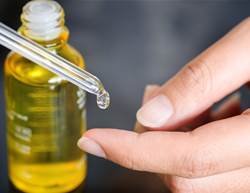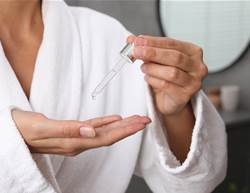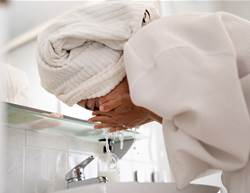Where do you purchase your skincare and hair products?
We're all for that sun-kissed glow, but the reality of spending too much time in the sun is that once the glow fades you're left with, well, the 'kisses': permanent skin damage that often manifests in blemishes. If you want your skin to look as even, clear and radiant as possible, year-round sun protection is key.
Sun spots (a.k.a. age spots, wisdom spots, or liver spots) are flat, brown marks that are common in people over 50. Although the marks themselves are considered harmless, they're a direct response to UV radiation, which means that if you get a lot of them it's probably because you didn't do a great job of protecting your skin from the sun over the years, though your genes also play a role.
No matter your age, the best way to reduce your risk of developing these unsightly marks is to load up on sunscreen. If you're a regular foundation-wearer, you might hope that the amount of SPF in your go-to product is sufficient. Wrong, says dermatologist Dr Meghan Feely.
The truth about SPF in makeup
The issue, explains Feely, isn't that the info on your makeup label is bogus. If your foundation bottle says it contains a sun protection factor (SPF) of 15-30, then it most likely does. The catch is that you're probably not using enough of the product to actually get that level of protection.
“To get adequate protection, you'd need to apply many layers of makeup, which most women aren't going to do because it would look cakey," says Feely. "Not only that, but like [stand-alone] sunscreen, the makeup would need to be reapplied every two hours to continue to be effective, which also isn’t realistic or aesthetically pleasing for most women.” Her advice: Pair your makeup, regardless of its SPF promise, with a separate sunscreen.
How to apply sunscreen
For optimal protection against sun spots (and wrinkles and skin cancer), apply sunscreen to exposed skin before putting on any makeup. The Cancer Council recommends wearing a broad-spectrum, water-resistant sunscreen with SPF 30 or higher every day when the UV Index is forecast to be 3 or above. Both types of UV rays (UVA and UVB) can also lead to skin cancer.
Some dermatologists suggest going higher: "For cosmetic protection, SPF 50 would be even more helpful at any time of year,” adds dermatologist Dr Ronda Farah.
Ideally, you should apply sunscreen at least 15 minutes before leaving your house and reapply it every two hours, says Feely. "Even if you’re indoors in an office like many of us are, it’s important to be aware that UVA rays can penetrate through glass windows," she says. If you don't want to mess up your makeup mid-day, consider brushing on a powder that contains SPF.
Heading out for a day of skiing or sledding? You'll want to be extra vigilant about sun protection to avoid burning as badly as you would if you went to the beach in the summer without sunscreen. "Snow, sand, and water all reflect the sun,” Feely says. “Snow reflects 80% of the sun’s rays." Another important note: UV rays are stronger at higher elevation, so it's even more important to be cautious on the slopes. (Don't forget your hat and sunglasses or goggles!)
You have sun spots; now what?
If you already have bothersome sun spots, autumn and winter is a good time to tackle them, says Farah. Talk to your dermatologist about in-office procedures and prescription creams, or try over-the-counter dark spot correcting products, which typically contain a lower percentage of active ingredients found in prescription-strength options.
Meanwhile, don't neglect to see a dermatologist if anything on your skin looks strange. While sun spots themselves aren't cause for concern, they can sometimes be confused with cancerous lesions, so when in doubt it's smart to get checked out. That goes double if you have a personal or family history of skin cancer.
“If you’re unsure about a new spot, or if it sticks out from other spots on the body, or if it follows the ABCDEs of melanoma—it’s asymmetrical, has irregular borders, has unusual colour patterns, it’s more than 6 millimetres in diameter and, especially, if it’s evolving or changing in any way—then go see a dermatologist,” Farah says.
Feel the need to brush up on your sunscreen smarts? Find out everything you need to know about sunscreen here.









